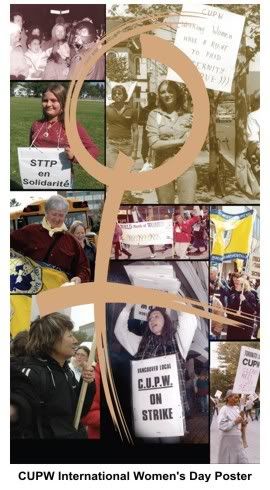Struggling with the “Charity Model”
 There are “regular panhandlers”, hats and hands outstretched, in Ottawa that I gladly “donate” my toonies to; I volunteer for delivering Christmas hampers; I donate to food banks; I do select “social purchase” merchandise over brand names whenever I shop; I support United Way fundraisers; I have never been inside a casino in my life; and I don’t do lottery tickets….but I am rethinking my behaviour and how it helps or hinders the world I want to build for my children.
There are “regular panhandlers”, hats and hands outstretched, in Ottawa that I gladly “donate” my toonies to; I volunteer for delivering Christmas hampers; I donate to food banks; I do select “social purchase” merchandise over brand names whenever I shop; I support United Way fundraisers; I have never been inside a casino in my life; and I don’t do lottery tickets….but I am rethinking my behaviour and how it helps or hinders the world I want to build for my children.
Recent changes to the Status of Women’s programs and the terms and conditions (T & Cs) are very much based on this charity model which ignores the systemic issues behind the problems at hand. These changes to the terms and conditions are resulting in essential national women’s groups like NAWL and CRIAW ineligible for funding to continue their work and fighting for their own survival
The “charity model” fails our sons and daughters because, while I agree that there is a need for increased funding to women’s shelters, if current divorce laws continue to fail to take into account spousal and family violence, then we are not really addressing the issue of violence against women. The new T&Cs allow funding for shelters but not for work to research, question, challenge, lobby, advocate and change unjust laws.
I’ll continue to donate and volunteer but I want more…
This Tory movement towards a charity model and away from a social and human rights model reminded me of that familiar adage: "If you give a (wo)man a fish, you'll feed her/him for a day. If you teach her/him to fish, (s)he'll eat for life." ……or something like that.
The feminist in me needs to move beyond the “giving/teaching” and include the “asking”:
- “what if all of their fishing poles are broken?”
- “what if the price of bait is too high for them to be able to afford to catch enough fish each day and something needs to be done on a structural/federal level to help them afford enough mealworms for bait?”.
- “what if the ocean has been fished out by commercial fishers?”
- “what if we planted and maintained a garden instead of fish?”
.......more random thoughts on acts of charity....
Jean Swanson has worked as an anti-poverty activist for 25 years, 15 of which were with End Legislated Poverty in Vancouver. In her book, Poor Bashing: The Politics of Exclusion (Between the Lines, Toronto, 2001), she says charity creates the illusion that needs get met.
Quoting a member of Ottawa's Social Planning Council, she says, charity "is a visible way of making people feel good about a problem, but not really addressing it in any depth. It doesn't address why the person is poor. It doesn't address jobs. It doesn't address income levels."
Even though charity is important, it should not replace justice work, she says. "If ending poverty is a priority for you, focus on working for more income and power equality," she advises.
- Acts of charity towards the poor, even though well-intended, are ultimately not as beneficial as structural change.
- When considering women’s poverty, the charity model approach is about ensuring that women can find a donated business suit which will allow them to access a minimum wage job. What women’s groups have been working on over the last few years is how women’s poverty cannot be addressed solely from the vantage point of finding a job, whatever the job, but that multiple forces such as those behind racism, colonialism and ableism need to be simultaneously addressed if we are to seriously improve women’s economic well being.
- The charity model is the oldest and still most prevalent approach for folks with disabilities—one that views people with disabilities as unfortunates or victims of circumstance, whom society must care for as a moral responsibility. While this approach may enrich benefits and services for people with disabilities, the charity model tends to under-emphasize the capacities of people with disabilities to participate more fully in work and community life.
- The old ‘charity’ model of care—a model that emphasizes dependence, segregation and transfers the costs of disabilities away from the state and towards families and charitable organizations. The disability rights community strongly objects to this model as a throwback to the old British Poor Laws of the 1600s.
- Hunger's not about food. It's so much bigger. It requires political discourse
- Charity likely does more to bolster the donors’ self-image than to build the recipients’ self-determination.
- People on the receiving end who have never been given the chance to reciprocate will in due time despise not only the gift, but the giver.’”
- The charity model teaches helplessness and enforces dependency
- The blind charity model, whereby the majority sighted establishment views the blind as less than equal to them, and as wards or recipients of their benevolence. The other approach is that of the organized blind movement: the National Federation of the Blind, and the Canadian Federation of the Blind. That is, an approach based on equality between the blind and the sighted; based on the blind speaking for themselves, and not being spoken for by do-gooders who presume to know better and pronounce on their behalf. Based on the empowerment of the blind as citizens and equals, competent and fit to take charge of their own destiny and affairs.
- As the Canadian state purges itself of its social and human rights reponsibilities, the Non-profit institutions and volunteering sector is outgrowing all other sectors in the economy
- Only 20 per cent of the money from the Alberta Lottery Fund goes to groups that might be considered non-profit, community-based and charitable. The rest goes to a variety of other groups and initiatives. For instance, last year two one-time $35-million grants were given to Edmonton Northlands and the Calgary Exhibition and Stampede. This year, $55 million is budgeted for provincial highways, $25 million more for street improvements. More than $60 million is budgeted to public and separate schools in the province, $1.6 million is budgeted for gaming research. And on and on and on.










No comments:
Post a Comment